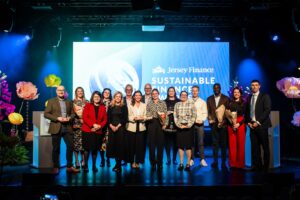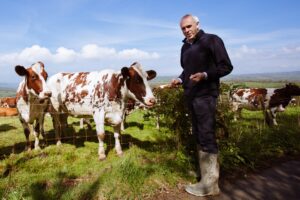
Hedgerows were historically planted to keep in grazing livestock, but ecologists now see these man-made structures as a ‘happy accident’ for biodiversity.
In recent years, Jersey has concentrated on expanding hedgerows to provide a range of benefits for local wildlife. These mixed hedges of shrubs and trees provide shelter and food for many birds, animals and insects. They also connect fragmented ecosystems, providing critical corridors for wildlife to travel across agricultural areas.
‘The benefit to biodiversity can be described as a happy accident,’ explained local conservationist Piers Sangan, from Sangan Island Conservation. ‘As land was enclosed for agriculture, the prevailing habitat, which was scrubland, was lost. But the management of hedgerows mimicked the vegetation structure found on scrubland, and many of the species were able to adjust to the changing landscape. As such they are now reliant on hedgerows for their life cycles.”
The benefits of hedgerows, Piers said, depend largely on how they are managed: ‘Un-managed hedgerows will either collapse or turn into tree lines, both of which do not provide the same functionality or biodiversity value as a well-managed hedge. In the UK it is part of the annual winter work that hedge lines are managed in rotation –either by laying, coppicing or hard cutting where heavy regeneration is not yet required.’

While Jersey has focused on planting new hedging over the past few years – both to fill in gaps, and plant new hedge lines – Piers has turned his attention to managing existing hedgerows and working to rejuvenate them.
One of his latest projects involves restoring 1 km of hedgerows around fields farmed by Jersey Dairy producers – part of Jersey Dairy’s ongoing commitment to the Linking Environment and Farming (LEAF) accreditation scheme.
In 2021, ecologists surveyed the hedgerows surrounding these fields to identify those in the poorest condition. These are characterised by tall leggy single stem plants, mushroom-shaped growth, gaps present, narrow structure and no significant woody foliage in the lower part.

To rejuvenate these hedgerows, Sangan Island Conservation and Jersey Trees for Life are using the traditional method of coppicing, where the existing stems are cut to ground level to promote new growth.
They are also filling any gaps in the hedgerows with new hawthorn and hazel whips. ‘Both of these species can be managed to form thick diverse hedges whilst providing a mix of berries and nuts for wildlife,’ Piers said.
‘Looking forward to future management, both of these species can be managed either by laying or coppicing when the next cycle of rejuvenation is required.’
Piers is reassuring Islanders that while the cut-back hedgerows might look drastic, they will grow back stronger and denser over the coming year. ‘We ask people to bear with us to see the vast improvements this will bring to our countryside.’





One Response
The crapauds are wonderful. In the 1980s and 1990s we regularly drove down past Grand Vaux reservoir coming down Mont de La Rosiere from my mother’s house after a Sunday evening roast. Around about 9.30pm in January/February the road would be covered in toads, many squashed, but many also healthy. It would take longer than usual getting home as I would have to pick up the live toads and guide them over the hedge to safety.